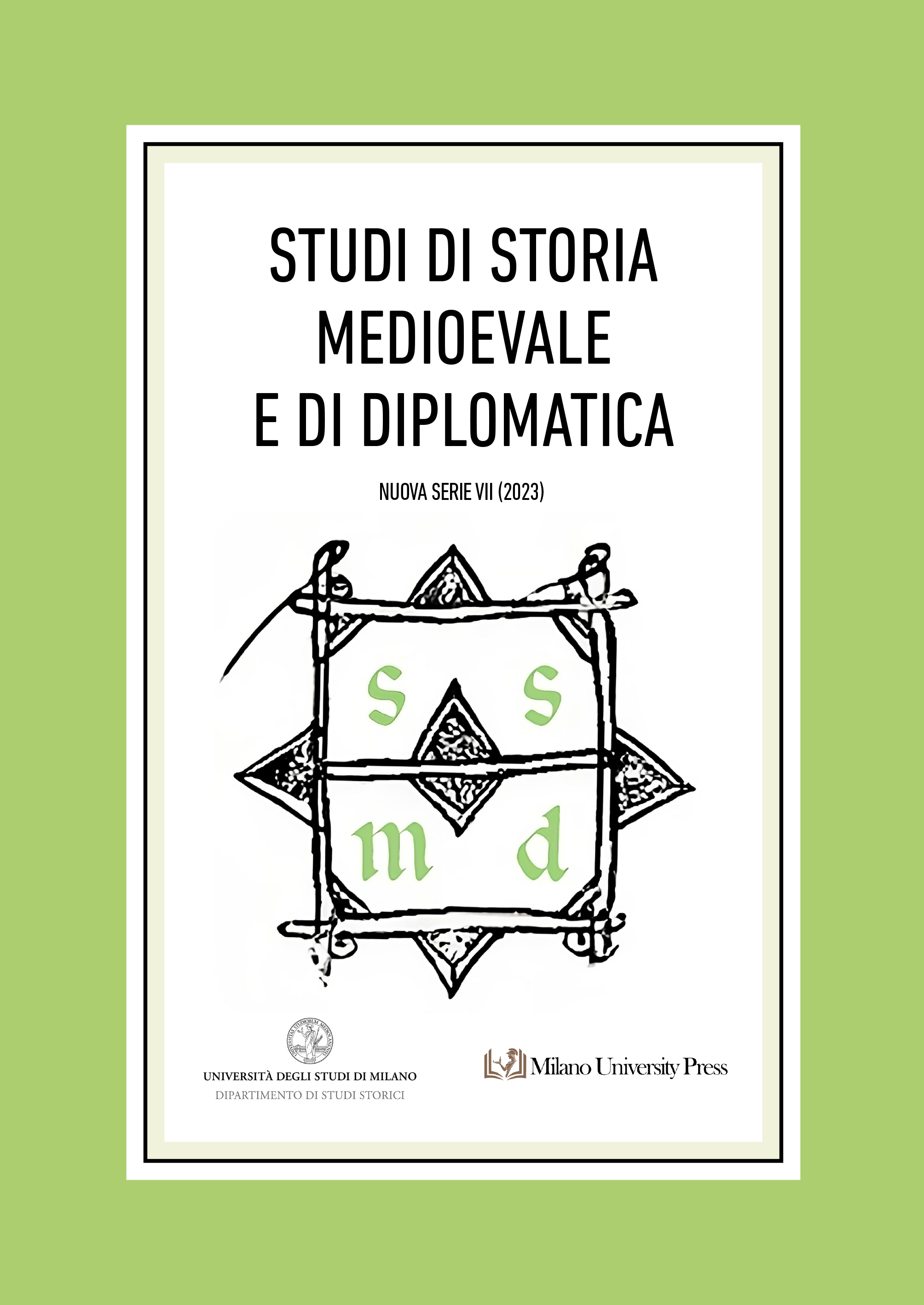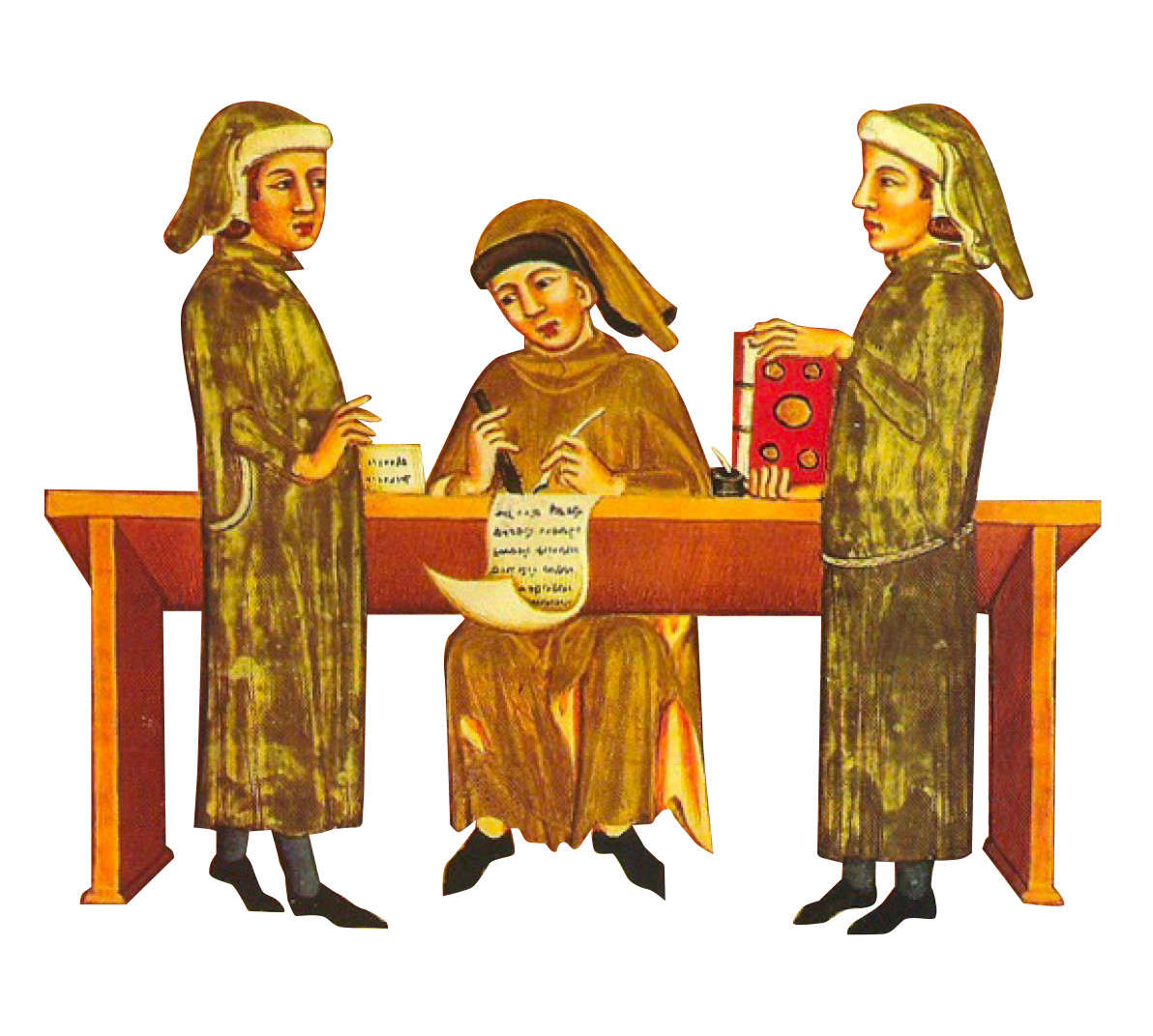Peripheral neighbourhoods and the Ciompi revolt (Florence, 1378). An interpretive hypothesis
DOI:
https://doi.org/10.54103/2611-318X/20173Keywords:
Ciompi, revolt, free spaces, peripheries, contradeAbstract
Over the last few decades, the concept of spatial turn that has influenced various disciplines has taught us – or, rather, emphatically reaffirmed – that space is fundamental to understanding many economic, social, cultural and political dynamics. The article takes its cue from this assumption and reconsiders a much (and very well-) studied episode, the Ciompi riot by placing the spaces of the riot and the rioters at the heart of the analysis. It tries to demonstrate, also by resorting to scholarly literature in anthropology and sociology published over the last decades, how giving back importance to the dimension of space can contribute to tackling some very relevant questions for understanding the events that unraveled during the summer of 1378: the construction of a shared social identity, the definition of a ‘class’ solidarity, the elaboration of a discourse alternative to that of the elite, capable of sustaining the mobilization of a similar scale and with such ambitious objectives.
Downloads
References
O. BANTI, Noterelle sul Tumulto dei Ciompi, in O. BANTI, Scritti di storia, diplomatica ed epigrafia, a cura di S.P.P. SCALFATI, Pisa 1995, pp. 503-534.
G. BELLI, Gli spazi del mercante e dell’artefice nella Firenze del Quattrocento, in Nati sotto Mercurio. Le architetture del mercante del Rinascimento fiorentino, a cura di D. BATTILOTTI - G. BELLI - A. BELLUZZI, Firenze 2011, pp. 7-72.
G.A. BRUCKER, The Ciompi revolution, in Florentine studies. Politics and society in Renaissance Florence, edited by N. RUBINSTEIN, London 1968, pp. 314-356.
G.A. BRUCKER, Florentine politics and society, 1343-1378, Princeton 1962.
C. CALHOUN, The roots of radicalism. Tradition, the public sphere, and early nineteenth-century social movements, Chicago and London 2012.
S.K. COHN, The laboring classes in Renaissance Florence, New York 1980.
S.K. COHN, The topography of medieval popular protest, in «Social history», 44/4 (2019), pp. 389-411.
Cronaca fiorentina di Marchionne di Coppo Stefani, a cura di N. RODOLICO, Città di Castello 1903.
C.M. DE LA RONCIÈRE, Pauvres et pauvreté à Florence au XIVe siècle, in Études sul l’histoire de la pauvreté (Moyen Age - XVIe siècle), sous la direction de M. MOLLAT, Paris 1974, pp. 661-746.
Diario d’Anonimo fiorentino degli anni 1358 a 1389, in Documenti di storia italiana, VI, Cronache dei secoli XIII-XIV, a cura di A. GHERARDI, Firenze 1876.
J. DUMOLYN - J. HAEMERS, ‘A bad chicken was brooding’: subversive speech in late medieval Flanders, in «Past and present», 214/1 (2012), pp. 45-86.
N.A. ECKSTEIN, Addressing wealth in Renaissance Florence. Some new soundings from the Catasto of 1427, in «Journal of urban history», 32/5 (2006), pp. 711-728.
N.A. ECKSTEIN, The district of the Green Dragon. Neighbourhood life and social change in Renaissance Florence, Firenze 1995.
P.C. FALLETTI FOSSATI, Il tumulto dei Ciompi. Studio storico-sociale, Roma 1882.
R. FANTASIA - E. L. HIRSCH, Culture in rebellion: the appropriation and transformation of the veil in the Algerian revolution, in Social movements and culture, H. JOHNSTON - B. KLANDERMANS editors, London 1995, pp. 144-162.
F. FRANCESCHI, I ‘Ciompi’ a Firenze, Siena e Perugia, in Rivolte urbane e rivolte contadine [v.], pp. 277-303.
F. FRANCESCHI, Oltre il «tumulto». I lavoratori fiorentini dell’Arte della Lana fra Tre e Quattrocento, Firenze 1993.
F. FRANCESCHI, I tedeschi e l’arte della lana a Firenze fra Tre e Quattrocento, in Dentro la città. Stranieri e realtà urbane nell’Europa dei secoli XII-XIV, a cura di G. ROSSETTI, Napoli 1989, pp. 257-276.
R. A. GOLDTHWAITE, La costruzione della Firenze rinascimentale. Una storia economica e sociale, Bologna 1984.
R. A. GOLDTHWAITE, Ricchezza e domanda nel mercato dell’arte in Italia dal Trecento al Seicento. La cultura materiale e le origini del consumismo, Milano 1995.
P. GRILLO, L’ordine della città. Controllo del territorio e repressione del crimine nell’Italia comunale (secoli XIII-XIV), Roma 2017.
E. L. HIRSCH, Urban revolt. Ethnic politics in the nineteenth-century Chicago labor movement, Barkeley and Los Angeles 1990.
P. LANTSCHNER, The logic of political conflict in medieval cities. Italy and the Southern Low Countries, 1370-1440, Oxford 2015.
R. B. LITCHFIELD, Florence ducal capital, 1530-1630, 2008, https://www.fulcrum.org/concern/monographs/8623hz61d.
L. MACCI - V. ORGERA, Contributi di metodo per una conoscenza della città, Firenze 1976.
H. MANIKOWSKA, «Accorr’uomo». Il ‘popolo’ nell’amministrazione della giustizia a Firenze durante il XIV secolo, in «Ricerche Storiche», XVIII (1988), pp. 533-555.
H. MANIKOWSKA, Polizia e servizi d’ordine a Firenze nella seconda metà del XIV secolo, in «Ricerche storiche», XVI (1986), pp. 17-38.
D. S. MASSEY – N. DANTON, American apartheid. Segregation and the making of the underclass, London 1993.
J. M. NAJEMY, A history of Florence 1200-1575, Oxford 2006 (trad. ital. Torino 2014).
Nuova cronica di Giovanni Villani, edizione critica a cura di G. PORTA, Parma 1990-1991.
R. PARIS, Les «Ciompi»: cardeurs, foulons, bâtards?, in «Médiévales», 30 (1996), pp. 109-115.
G. PETRALIA, Mobilità negate. Intorno al tumulto fiorentino detto dei Ciompi, in La mobilità sociale nel medioevo italiano. 4. Cambiamento economico e dinamiche sociali, a cura di S. M. COLLAVINI - G. PETRALIA, Roma 2019, pp. 235-271.
F. POLLETTA, ‘Free spaces’ in collective action, in «Theory and Society», 28/1 (1999), pp. 1-38.
A. POLONI, La florentina libertas nel contesto del conflitto politico interno nella Firenze del XIV secolo, «Edad Media. Revista de Historia», 21 (2020), pp. 31-44, https://revistas.uva.es/index.php/edadmedia.
A. POLONI, The political mobilisation of wage labourers and artisans in Siena, Florence, Lucca and Perugia in the second half of the fourteenth century, in Disciplined dissent: strategies of non-confrontational protest in Europe from the twelfth to the early sixteenth century, a cura di F. TITONE, Roma 2016, pp. 113-138.
A. POLONI, Le rivolte dei poveri. Alcune considerazioni sulle forme di mobilitazione del popolo minuto nelle città comunali italiane (XIII-XIV secolo), in Economies de la pauvreté au Moyen Âge, coordonné par P. BENITO - S. CAROCCI - L. FELLER, Madrid 2023, pp. 263-278.
Rivolte urbane e rivolte contadine nell’Europa del Trecento. Un confronto, a cura di M. BOURIN - G. CHERUBINI - G. PINTO, Firenze 2008.
N. RODOLICO, Il popolo minuto. Note di storia fiorentina (1343-1378), Firenze 1968.
D. ROSENTHAL, Big Piero, the Empire of the Meadow, and the parish of Santa Lucia: claiming neighbourhood in the early modern city, in «Journal of Urban History», 32/5 (2006), pp. 677-692.
J. C. SCOTT, Domination and the arts of resistance. Hidden transcripts, New Haven 1990.
E. SCREPANTI, L’angelo della liberazione nel tumulto dei Ciompi. Firenze, giugno-agosto 1378, Firenze 2008.
H. SERNEELS, Making space for resistance: the spatiality of popular protest in the late medieval Southern Low Countries, in «Urban History», 49 (2022), pp. 709-724.
P. L. SPILNER, «Ut civitas amplietur». Studies in Florentine urban development, 1282-1400, Phd dissertation, Columbia University 1987, https://www.academia.edu/36785948/Ut_civitas_amplietur_Studies_in_Florentine_Urban_Development_1282_1400.
A. STELLA, Le Ciompi à l’assaut des beaux quartiers, in Territoires, lieux et espaces [v.], pp. 191-206.
A. STELLA, La révolte des Ciompi. Les hommes, les lieux, le travail, Paris 1993.
F. SZNURA, L’espansione urbana di Firenze nel Dugento, Firenze 1975.
L. TANZINI, 1345. La bancarotta di Firenze. Una storia di banchieri, fallimenti e finanza, Roma 2018.
Territoires, lieux et espaces de la revolte: XIVe-XVIIIe siècle, sous la direction de P. BRAVO - J. C. D’AMICO, Dijon 2017.
R. C. TREXLER, Follow the flag. The Ciompi revolt seen from the streets, in «Bibliothèque d’Humanisme et Renaissance», 46/2 (1984), pp. 357-392.
R. C. TREXLER, Herald of the Ciompi. The authorship of an anonymous Florentine chronicle, in «Quellen und Forschungen aus italienschen Bibliotheken und Archiven», 65 (1985), pp. 159-191.
R. C. TREXLER, Neighbours and comrades: the revolutionaries of Florence, 1378, in «Social analysis. The international journal of anthropology», 14 (1983), pp. 53-106.
Il tumulto dei Ciompi. Cronache e memorie, a cura di G. SCARAMELLA, Bologna, 1917-1934.
M. VAN GELDER, Protest in the Piazza: contested space in early modern Venice, in Popular politics in an aristocratic republic. Political conflict and social contestation in Late Medieval and Early Modern Venice, edited by M. VAN GELDER - C. JUDDE DE LARIVIÈRE, New York 2020, pp. 129-157.
Voices of the people in late medieval Europe. Communication and popular politics, edited by J. DUMOLYN - J. HAEMERS - H. R. OLIVA HERRER - V. CHALLET, Turnhout 2014.
J. WATTS, The making of polities. Europe, 1300-1500, Cambridge 2009.
A. ZORZI, Contrôle social, ordre public et répression judiciaire à Florence à l’époque communale: éléments et problèmes, in «Annales. Histoire, Sciences Sociales», 45/5 (1990), pp. 1169-1188.
A. ZORZI, Politiche giudiziarie e ordine pubblico, in Rivolte urbane e rivolte contadine [v.], pp. 381-420.
Downloads
Published
How to Cite
Issue
Section
License
Copyright (c) 2023 Alma Poloni

This work is licensed under a Creative Commons Attribution-ShareAlike 4.0 International License.




